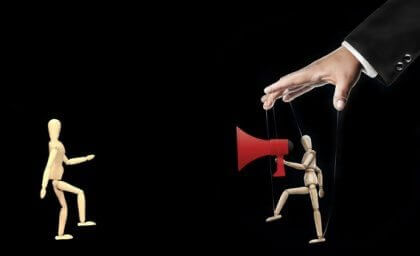Framing theory includes a set of concepts drawn from sociology and communication sciences, aims to explain why people focus on some aspects of reality and not others, as well as show why most end up seeing reality in one way and not another.
The framing theory has been applied to the mass media, based on the idea that reality is presented by the media after being subjected to a framework, that is, a certain perspective that privileges some aspects over others.
- “When people do not learn the tools of judgment and do not cling to their hopes.
- The seeds of political manipulation are planted.
- “Stephen Jay Gould.
In this way, what is presented to us as “reality” is only part of it. This part is located within the framework previously implemented, so the attention or interest of people is deliberately directed to certain aspects, that is, the vision of society is configured so that certain aspects are seen in a specific way.
One of the first people to talk about? Frames?Yes
That is, frames are used to define the boundaries of objects and thus distinguish them from others. We know that a pencil is a pencil, not a thermometer, because of its particular characteristics that set it apart.
In 1974, sociologist Erving Goffman took up this issue and noted that the fundamental thing is not reality itself, but how it is interpreted by individuals, he has established that information is understood in one way or another, depending on the context in which it is located. is presented.
For example, when we establish a category of “dangerous persons”, anything that appears, whether part of it or not, will be considered undesirable. If we include a young rastafari in this category, probably those who know nothing of this. The movement will assume it’s really dangerous. Framing determines the interpretation of the object.
It was Barbara Tuchman who introduced all these concepts into the field of communication, who in 1978 claimed that the news functioned as a framework, are designed by the media and the journalist and determine how a society sees reality, but not reality itself.
According to the theory of the framework, the exercise of the means involves several processes. They are as follows:
Framing theory also proposes that this whole process takes place in different phases, these are:
What is relevant in all this is to understand that the way reality is presented through the media is not reality itself, it is important that we are aware that it is healthy to criticize the information we receive.
An example can clarify all of this. We will reflect on the U. S. invasion of Iraq, which was preceded by reports that a chemical weapons unit had been identified, which would eventually be used against civilians, and soon the arrival of troops is presented as a heroic act. Try it, the whole world has seen the image of thousands of people tearing down the statue of Saddam Hussein in Baghdad.
This last image was proof of what? Simply that thousands of people were against Saddam Hussein’s regime, but not all those thousands were from Iraq. However, the situation looks like this: as if there was consensus.
Over time we also learned that the alleged chemical weapons unit never existed and that in Iraq there were sectors totally opposed to foreign intervention, despite this, many people are likely to continue to support the original version of the facts, assuming the media-designed framework.

